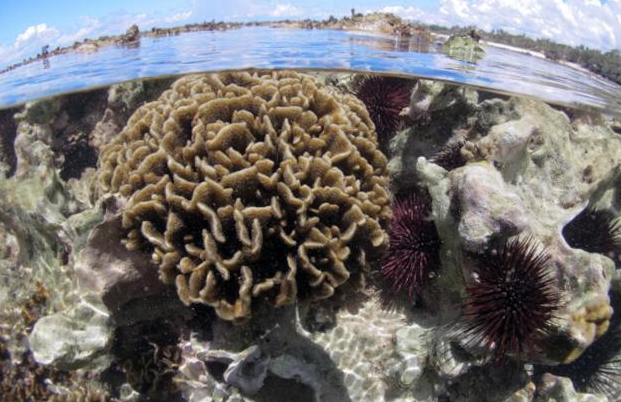 World Conservation Society Senior Conservation Zoologist Tim McClanahan has been persistent and often unconventional in his efforts to understand and protect coral reef ecology in Kenya and throughout the Western Indian Ocean. (Photos by Emily Darling)
World Conservation Society Senior Conservation Zoologist Tim McClanahan has been persistent and often unconventional in his efforts to understand and protect coral reef ecology in Kenya and throughout the Western Indian Ocean. (Photos by Emily Darling)
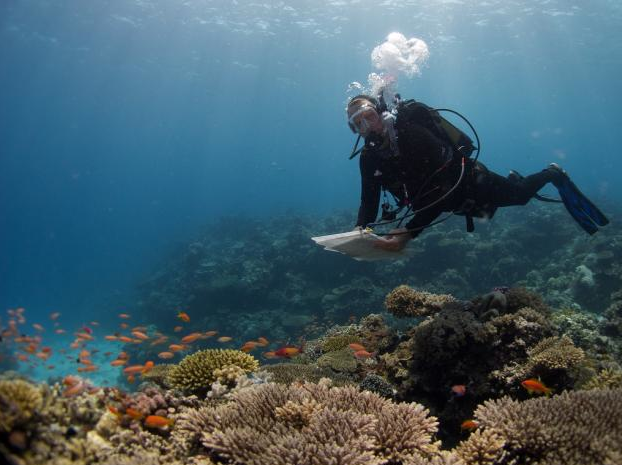 Sometimes scientific data can be used to tell both sides of a story. Sometimes it’s the very thing that bridges divided interests, offering real-world solutions that speak where words have failed.
Sometimes scientific data can be used to tell both sides of a story. Sometimes it’s the very thing that bridges divided interests, offering real-world solutions that speak where words have failed.
AAAS member Tim McClanahan was banking on that in 1994 when he invited a disgruntled group of traditional Kenyan fishermen to meet with him and marine resource managers to try to hash out new fisheries management practices.
He was stepping into the middle of a fire storm.
McClanahan, a senior conservation zoologist for the Wildlife Conservation Society (WCS) in Mombasa, Kenya, had just supported recommendations that some of their prime fishing territories located on the Kenyan coral reefs be designated as marine-protected areas. The fishermen were outraged, afraid the restrictions would damage their ability to make a living.
McClanahan had collected extensive data over a 10-year period demonstrating the destructive effect of some fishing techniques—such as seine fishing—on the coral reefs and fishing stocks. His research also showed the role that large marine-protected areas could play in conserving biological diversity and helping fishing stocks recover.
“There were a lot of accusations, blame and emotional discussions,” recalls McClanahan. “You’re dealing with traditions, asking communities to do things different from ways their fathers and forefathers did things.”
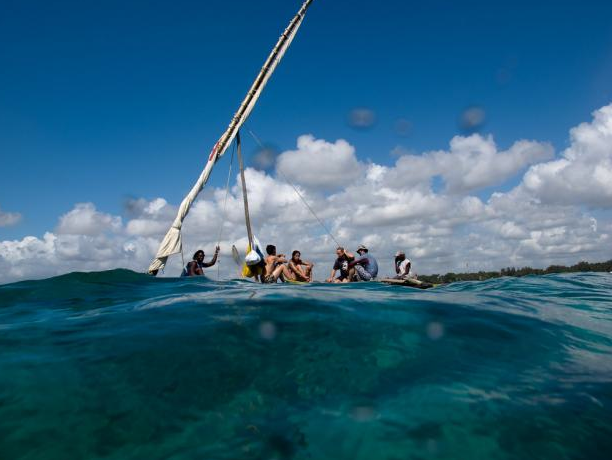 McClanahan, who speaks fluent Swahili, served as a mediator among the stakeholders. The conflict didn’t faze him, he says. In fact, he used the fishers’ concerns to help guide new research: “My role was to be unemotional and to evaluate peoples’ positions … to look at whatever data—including opinions—that were available to use as a basis to try to reconcile some of the rift between managers and fishermen.
McClanahan, who speaks fluent Swahili, served as a mediator among the stakeholders. The conflict didn’t faze him, he says. In fact, he used the fishers’ concerns to help guide new research: “My role was to be unemotional and to evaluate peoples’ positions … to look at whatever data—including opinions—that were available to use as a basis to try to reconcile some of the rift between managers and fishermen.
“And then to go out over the course of the year and collect data and test those ideas and come back a year later and say, ‘Okay, here’s what we were getting worked up about, here’s the data and the results.’ If people agree to make a change you make them part of the experiment,” he says, “if not, they become the baseline for comparison.’ ”
As a result of the data—and new relationships forged—the fishermen agreed to stop seine fishing on Diani, a large, popular reef and beach just south of Mambasa.
Their small-scale meeting eventually ramped up into a national collaborative for fisheries management, the annual Fishers Forum—a model of solutions-based science collaboration in which McClanahan leverages scientific findings to help fisheries managers and fishermen solve problems of mutual interest.
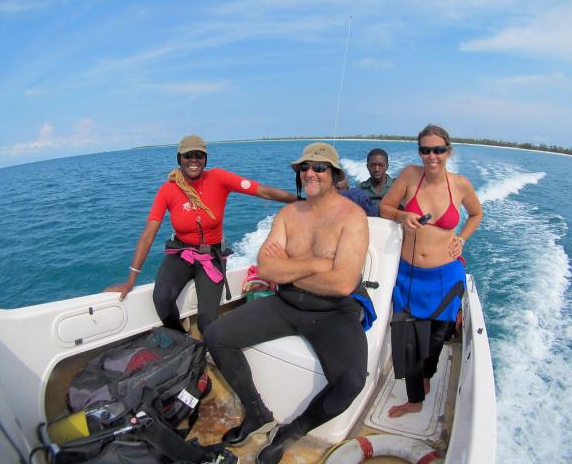 McClanahan is a bit of a rare fish himself. A tall, white American scientist, McClanahan has been persistent and often unconventional in his efforts to understand and protect coral reef ecology throughout the western Indian Ocean and beyond. (“I look like a California surfer boy who spends his time speaking Swahili to fishermen,” he quips.)
McClanahan is a bit of a rare fish himself. A tall, white American scientist, McClanahan has been persistent and often unconventional in his efforts to understand and protect coral reef ecology throughout the western Indian Ocean and beyond. (“I look like a California surfer boy who spends his time speaking Swahili to fishermen,” he quips.)
He first came to Kenya in the 1980s on a study-abroad program in college. While there, he fell in love with Nyawira Muthiga, a Kenyan woman studying zoology at the University of Nairobi. After several years of going back and forth between Kenya and graduate programs at the University of Florida, he married Muthiga in a traditional ceremony (“Very long and drawn out,” he chuckles, adding, “100 goats and worth it!”)
Settling in Mombasa, McClanahan was the first marine scientist to begin collecting large data sets on Kenya’s reefs, which extend over most of the coastline. “In terms of marine conservation, there were few scientific publications at all, nothing broad-scale, a 19th century sort of biology,” he observed.
He contacted the Wildlife Conservation Society—a leading, science-based conservation organization—about establishing some marine ecology programs in the region, which led to the establishment of its Coral Reef Conservation Project in 1990. Since then he has galvanized WCS efforts to develop tropical-marine ecology programs globally, with field offices now located in countries including Belize, Mozambique, Tanzania, Indonesia, Madagascar and Papua, New Guinea.
Often working as a team with his wife, a respected marine conservationist in her own right, McClanahan has spent the past 35 years studying, conserving and working on community-based projects to protect and restore Kenya’s extensive coral reef.
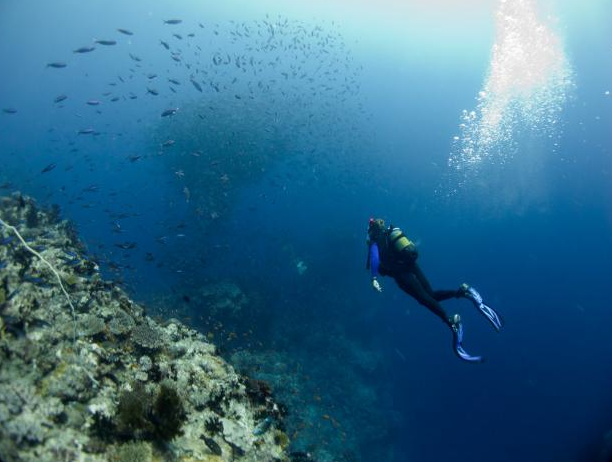 A typical morning begins with a stroll along the beach outside his home, then a session of snorkeling or a dive as McClanahan collects field data, “maybe counting fish, counting corals, looking to see what they might tell me about the state of the ecosystem and its health.”
A typical morning begins with a stroll along the beach outside his home, then a session of snorkeling or a dive as McClanahan collects field data, “maybe counting fish, counting corals, looking to see what they might tell me about the state of the ecosystem and its health.”
Diving on Kenya’s reefs is like leaving planet Earth, he marvels: “Reefs are fantastic because of the colors, the behaviors of the animals, the combination of the quirky fish morphology and their colors.”
Afterwards he might go to a fish landing site to measure fish catches, interacting with Kenyan fishers, many of whom he now calls his friends. Afternoons are spent either on the phone with peer scientists at marine sites around the globe or supervising a cadre of fervent young marine conservation scientists he is training and deploying to conservation sites the WCS is establishing throughout the globe.
By nature, McClanahan exudes collaboration. With fishers, managers, biologists, sociologists, students, governments, NGOs. His interests dance between field studies, lab work, social science research, and community action. “I bounce between environmental, ecological and social research,” he says, adding, “I make a concerted effort to mix it up.”
His wide ranging interests have yielded more than 200 peer-reviewed papers on topics including the status of reefs in the Indian Ocean, the effects of humans on coral reefs, the role of fisheries management on their ecology, the effects of the 1998 coral bleaching event, simulation models of coral reef adaptation to climate change. He is the author of several books, including “Adapting to a Changing Environment: Confronting the Consequences of Climate Change,” which he co-authored with Joshua Cinner.
One of McClanahan’s most impactful conservation projects is also the simplest. He has championed the use of escape-gap fishing traps among local fisherman to reduce their sizable bycatch, which is placing a tax on the fragile reef ecosystem. These woven traps feature slots in the corners where smaller, non-target fish can escape.
“It seems like a stupid thing to do. Why put a hole in a trap?” says McClanahan. “The idea is they won’t catch fish of low economic value, but will catch large fish. We had [local] fishers try it on an experimental basis and they were making 20 percent more money. We’re now trying to get whole communities to adopt these traps.”
Despite his bucolic environs and varied research interests, McClanahan struggles daily against the single, depressing reality that the world’s oceans are in deep trouble. He wrestles with ways to help coral reef ecosystems survive in the face of ocean acidification and global warming.
“Some of the things I do come out of angst,” he acknowledges. “You are watching this beautiful ecosystem be degraded by climate change or human interaction. It can be frustrating.”
The worldwide coral bleaching event that occurred in 1998 sent McClanahan into an emotional tailspin, he said: “Half the corals died from warming surface water. There was a recognition that, ‘Woah, the future could be like this more and more because of climate change.’ “
Initially, McClanahan succumbed to a feeling of despair about the future of the reefs, “then you sort of pull up your socks and go see what you can do,” he said.
For him, that meant suiting up in his diving gear and experimenting. He tried scrubbing off invasive algae with wire brushes and gardening shears. He planted new corals that he thought might survive in warmer waters. He collected reams of data—coral life histories which would indicate “which corals would be promoted by climate change and which demoted.”
With these data, McClanahan helped develop a new classification system of biological traits of corals that indicate which corals have the capacity to adapt to a rapidly changing environment. Simulation models based on these data are likely to be a vital baseline guide for reef management efforts in the future, as oceans warm further.
As discussions of climate change move from prevention to resiliency, McClanahan becomes even more convinced that conservancy of marine ecosystems depends on creative solutions to problems shared very locally between those who make a living on the sea and those who use science to help keep it alive.
“Getting the social and ecological context right is what’s important,” he says. “We don’t really believe in large-scale policies. I know that if you do promote policies that are actually doable, that improve their livelihoods and … translate scientific ideas into a common language [pdf], then [people] are eager to participate.
“In ecology we typically spend a lot of time studying impact,” he adds, “but we need to spend equally as much time crafting solutions to those impacts. If we don’t, we’re not part of the social contract of scientist and society to improve the relationship between man and nature.”
July 14, 2014 | Author: AAAS MemberCentral Writer Selby Frame
